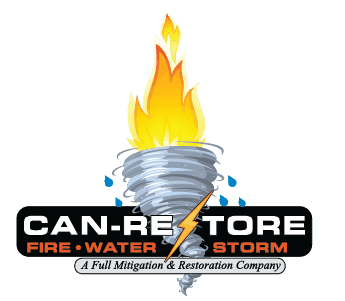So, you think you know about soot removal, huh?
 With a fire comes soot, and with soot comes soot removal. It’s one of the necessary evils after surviving a house fire. The fire damage, the smoke damage, and the soot, not to mention the emotional upheaval that comes with a crisis, is all part of the painful process.
With a fire comes soot, and with soot comes soot removal. It’s one of the necessary evils after surviving a house fire. The fire damage, the smoke damage, and the soot, not to mention the emotional upheaval that comes with a crisis, is all part of the painful process.
But what if you have a small fire? Or if the fire doesn’t destroy your home and it’s restorable? You’re just thinking dollar signs and time, at this point. So you tell yourself, maybe you can do the soot removal on your own. Maybe you don’t need a professional for this particular stage of the cleanup.
Whoa, there, Nelly. Take a breath and a step back and let us set the record straight about the misconceptions you might have about soot removal. Here are the top 4, with the accurate information provided to help you through your restoration process with your sanity in check.
Misconception #1: Soot is Just Dust
Soot is more than just dust. Soot is made up mostly of carbon that is left behind after a fuel, in this case your home and its contents, is not completely burned or combusted. Because soot is a product of what was burned, it can be very different in different situations.
Misconception #2: Soot is Soot is Soot
All soot is not created equal. Here are some examples:
- When water is used during a fire and the temperature is relatively low, the soot is smeary, pungent, and difficult to remove.
- When the fuel is dry and organic, such as wood, the soot left behind is dry and powdery and is the easiest type of soot to clean up.
- When grease burns, which is common in a kitchen fire, or when oil-based products such as plastics and synthetics burn, this type of soot is smeary and is extremely difficult to clean, requires additional removal steps, and is resistant to water-based cleaning.
Misconception #3: Soot is Safe
Although we often imagine the benign, small, black areas left behind when a candle burns or after a fireplace fire, the soot from a house fire is a whole different ballgame. It’s not just soft, powdery black dust that we can wipe away without consequence. Soot is toxic.
Whatever burns in a fire remains in the soot left behind. Chemicals burned? Chemicals are in the soot, and not just the chemicals, but the toxic remains of a huge array of household chemicals and chemicals used to decorate, paint, treat, repair, and build your home. Plastics and synthetics burned? Plastics and synthetics are in the soot, and not just the plastics, but the toxic residue that occurs when plastic is heated to extreme temperatures.
Not only is soot dangerous to your health if it’s inhaled, it’s also dangerous to your skin. Don’t go into a fire-damaged home without the proper protective gear, including gloves, coveralls, boots, face mask, and protective eyewear.
Misconception #4: Soot is Harmless
Although soot may seem harmless, it’s just black dust after all, isn’t it? That is far from the truth. Don’t delay professional soot cleanup. Soot is corrosive, it can break down wood, metal, and fabric, and it can cause etching on glass, discoloration of paint and wallpaper, and discoloration of appliances, metals, and plastics.
On the surface, soot may seem like the least of your problems when it comes to dealing with the cleanup and restoration after a fire, however this is one of the common misconceptions about soot. Don’t get tricked into believing soot is harmless and easy to clean up.

